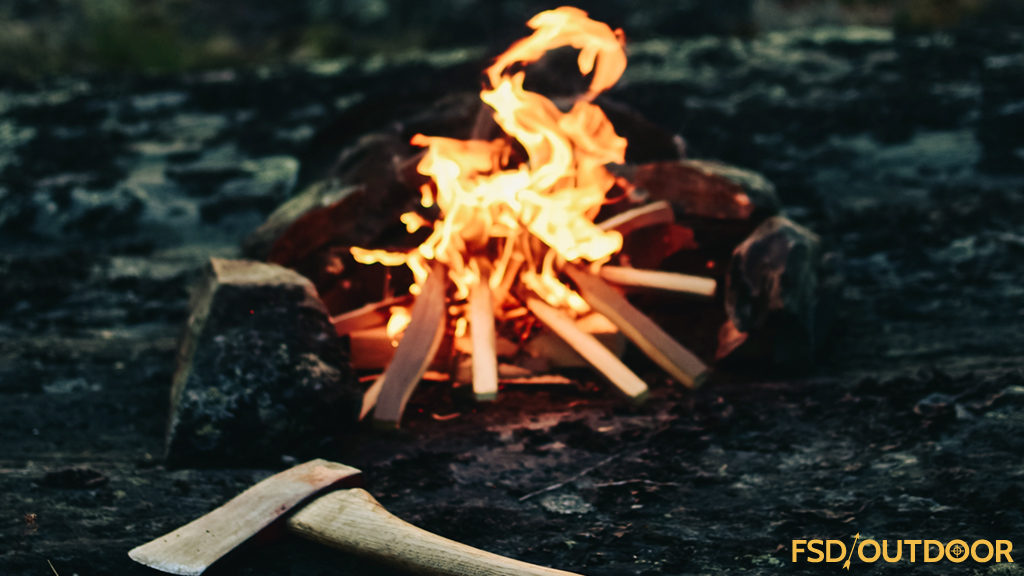
Every person has a unique strategy they swear by when it comes time to start a fire. For some, it is a methodical process, rich with science and understanding.
Others go from the hip, they trust their gut and they do what they think will work.
To be an expert fire starter, you have to balance the head and the heart, the science and the art. Here are a few tips that will help you the next time you’re making a campfire.
Wind
The wind, either a burst or a sudden flow, can reduce your chances of making a successful campfire down to zero.
The first thing you want to do is figure out what direction the wind is coming from. After that, you’ll want to build up a wall to intersect the wind.
It doesn’t need to be massive, you’re just trying to get your first few sparks enough time to grow. You can dig a pit for this, form a wall with rocks, or you can even pile up your firewood in the way of the wind.
Finally, when you’re applying spark to your tinder, make sure you block as much as you wind as you can with your free hand.
Rotting Wood
Rotting Wood is not usually useful in a fire. It is eaten up quickly and gives us very little energy. But Rotting Wood is good for one thing, tinder. And in most locations it is plentiful.
Use a small hatchet to cut chips from the rotten wood. To make a place for chopping, you can place a good piece of wood flat on the ground and use that as a cutting table. These chips are great for starting a fire and you can almost always find enough to use.
Pile
How your place the tinder is as important as the type of wood it is. Don’t just make a pile and hope it lights. You want to build a little teepee or create a stack of wood in a square.
Pick any shape, but the idea is that you want as much space in between as possible. Space means air and air means a fire that isn’t struggling to eat.
Feed It
Ideally, you’re not just going spark, either from a match or flint, to tinder. You need to light something else. Things like dried leaves, dried grass, some moss, shreds of cloth, and so forth are ideal here.
Place this material in between your pile of tinder and light the material. Slowly add more material to it as the fire needs. This will grow slowly and slowly until the tinder is lit. From there, it’s easy.
Seasoned or Green
All wood is not the same. When you cut down a tree, the wood is often called Green Wood. This means there is a lot of sap in wood. This means when it is burning, the sap is taking the heat instead of the wood, making it burn worse. With Seasoned wood, all that sap is dried out and the wood burns much better, producing more energy than Green.
When you are looking at wood you want to check out the grain. If it is rich with cracks that radiate from the center of the log, then you are looking at a good piece of wood, one that will burn very well.
The more campfires you create the more you can trust your gut. Building that gut feeling takes time. But with time, you’ll have the perfect balance of experience and knowledge that will fuel every fire you make.